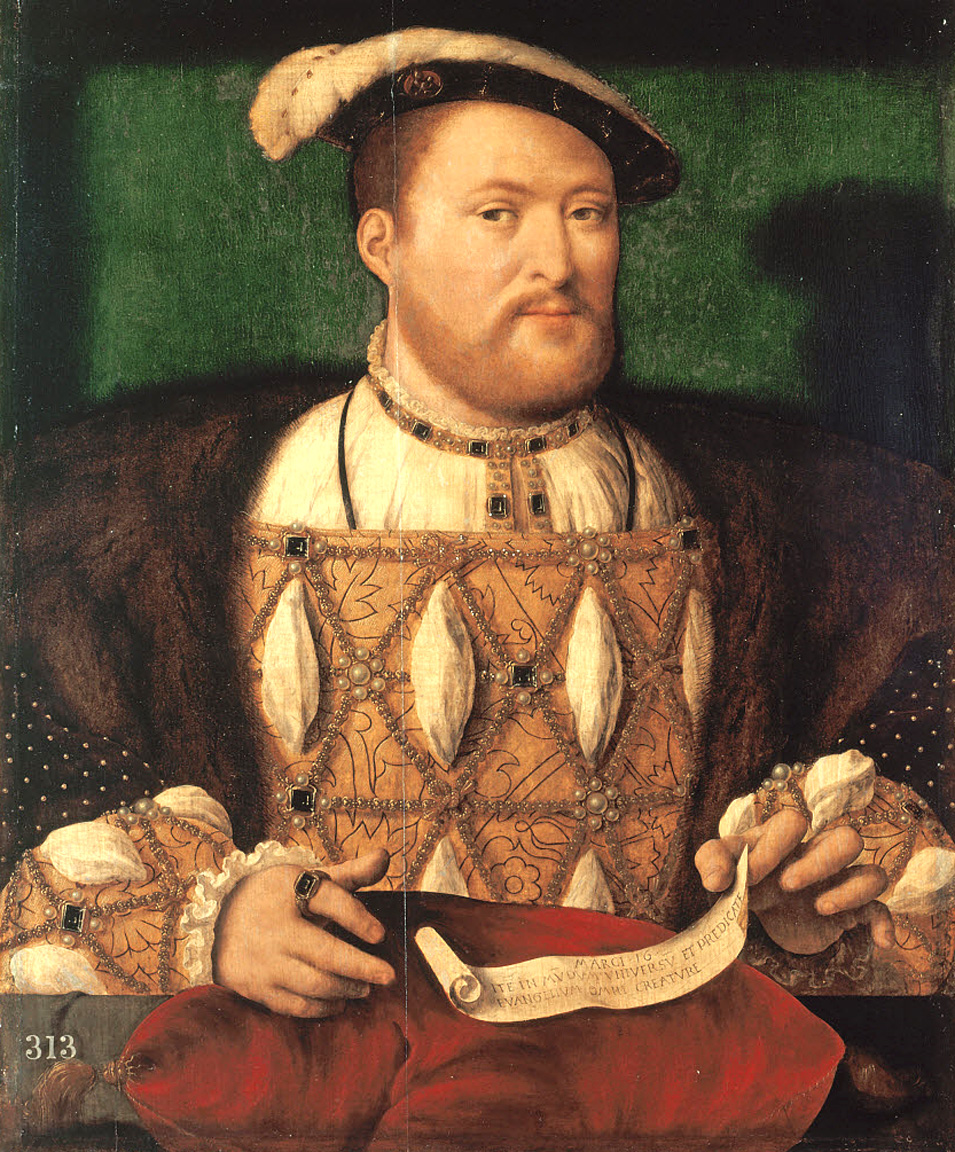 Thank you so much to our regular contributor, Heather R. Darsie, for writing this article on Anne of Cleves for us. Heather is working on a biography of Anne at the moment and is researching her using the German archives.
Thank you so much to our regular contributor, Heather R. Darsie, for writing this article on Anne of Cleves for us. Heather is working on a biography of Anne at the moment and is researching her using the German archives.
Anna von Kleve, known to English speakers as Anne of Cleves, left her homeland in December 1539 to join her new husband, Henry VIII of England. The two had been married by proxy a couple of months earlier, in October. After Henry successfully negotiated the marriage alliance with Anna’s younger brother Wilhelm, Duke of Cleves since early 1538, there was the simple matter of getting Anna to England. But which way to take, a sea route or over land? Both options would take Anna through Imperial and French territory, which was no small matter at the time.
The Holy Roman Emperor* Charles V and King Francis I of France had an uneasy peace with each other; conversely, this could be interpreted as a situation where Francis I and Charles V were therefore against Henry VIII for the time being. There was no realistic way for Anna von Kleve to reach England without travelling through some imperial territory (she did, in fact, live within imperial territory governed by her brother) and some of French territory. If Charles V or Francis I wished, they could capture Anna and use her as a political pawn, or cause woe to Anna in any number of ways if she were to be an unwelcomed guest in their lands.
As a bit of background of what caused the possible dangers, we must look to what else was happening on the Continent at the time of Anna’s journey. The Truce of Nice was signed between Charles V and Francis I, bringing an end to the parties’ struggle over control of the duchy of Milan. Charles V’s niece, Christina of Denmark, was made a widow when her husband Francesco Sforza, Duke of Milan, passed away in 1535. The couple had no children. At the start of the Italian War in 1536, Christina was still living in Milan. Charles V had taken control of Milan, and the transition of power was relatively peaceful, with no strong protests or uprisings. Charles later gave the territory to his son Phillip II of Spain. Francis I had a claim to Milan, over which the war was started. In the end, the Truce of Nice was entered into, causing an uneasy peace between Charles V and Francis I.
Wilhelm had inherited Guelderland in 1539 from a distant cousin who died without any heirs. This was a contested territory between Wilhelm and Charles V, bordering the Low Countries. Charles V felt he had a claim to the territory, whereas Wilhelm had possession of it. It was such a fuss that Henry VIII expressed concern over whether his bride Anna would be able to pass peacefully through the Low Countries, then under the governance of Charles V’s sister Mary of Hungary. Anna was not ready to travel to England until such security could be promised from both Charles V through Mary of Hungary, and Francis I. England and the Jülich-Kleve-Berg territories closed in the Low Countries and France on either side, posing a reasonable threat to both Charles V and Francis I.
When Anna left for England, two trains departed before joining up around Antwerp, thereafter travelling as one train through northern France and on to Calais. Anna was armed with a passport issued in the French language from Charles V on 27 October 1539, a copy of which exists and bears the imperial seal. This allowed her to pass through the Low Countries unmolested. Francis I had begun to warm up Anna’s brother Wilhelm, thereby allowing Anna safe passage to English-held France.
The prospect of travelling by sea at that time of year was certainly a dangerous one; the North Sea would have its share of poor winter weather, posing a danger to Anna and her large retinue. Land was the safest route. Anna was not unfamiliar with travelling about. Indeed, Hans Holbein painted his famous portrait of Anna, now at the Louvre, in the town of Düren, some 63 kilometers from where Anna’s brother typically kept court in Düβeldorf.
Over all, travelling across several countries was dangerous for anyone. If not carrying the proper papers, trouble could ensue, or a traveller could be robbed, or meet any number of gruesome fates. As a Herzogin (duchess) on her way to marry the King of England, Anna would have made an attractive target for political reasons, hence why ensuring safe passage through Charles V’s territory and Francis I’s country was paramount. This sort of travel in the late fall to early winter was no small feat on Anna’s part and shows her strong character from the start of her entry into English history.
*It is worth noting that an alternative name for the position of Holy Roman Emperor was “King of the Germans.”
Do click on the link in the sources section below to see the map which the British Library says "could be the presentation copy for the Cleves envoys, illustrating how Anne of Cleves could be safely transported from north Holland to England".
Heather R. Darsie lives in the United States with her family and three parrots. She works in the legal field, with a focus on children. She obtained a Bachelor of Arts degree in German Languages and Literature, then a Juris Doctorate in American jurisprudence, and studied abroad in Costa Rica and France. Heather has always loved history. She first became acquainted with Elizabeth I when she was in middle school and chose to write a book report about her. Since then, she has always held an interest in the Renaissance and its numerous enigmatic citizens, with particular focus on the history of England and Italy. She is currently working on a book on the heraldry of Tudor women and is also researching Anne of Cleves.
Sources & Suggested Reading
- Potter, David. Renaissance France at War. Woodbridge: Boydell Press (2008).
- Letters and Papers, Foreign and Domestic, Henry VII, Volume 14 Part 2, August-December 1539; particularly October 1539, 16-20.
- British Library Online Gallery. “The North Sea with Vignette View of Towns, with London as if Seen from the Thames.” http://www.bl.uk/onlinegallery/onlineex/unvbrit/t/001cotaugi00002u00064000.html Retrieved 22 February 2016.
- Passport, on record with the Archives of Nordrhein-Wesfallen. Duisburg, Germany.
- Norton, Elizabeth. Anne of Cleves: Henry VIII’s Discarded Bride. Gloucestershire: Amberley Publishing (2009).



Thank you so much for this post. I had been trying to find out where exactly Düren was since that is where the famous Holbein portrait was painted and am so glad you mentioned that it was 63 km from Düsseldorf.